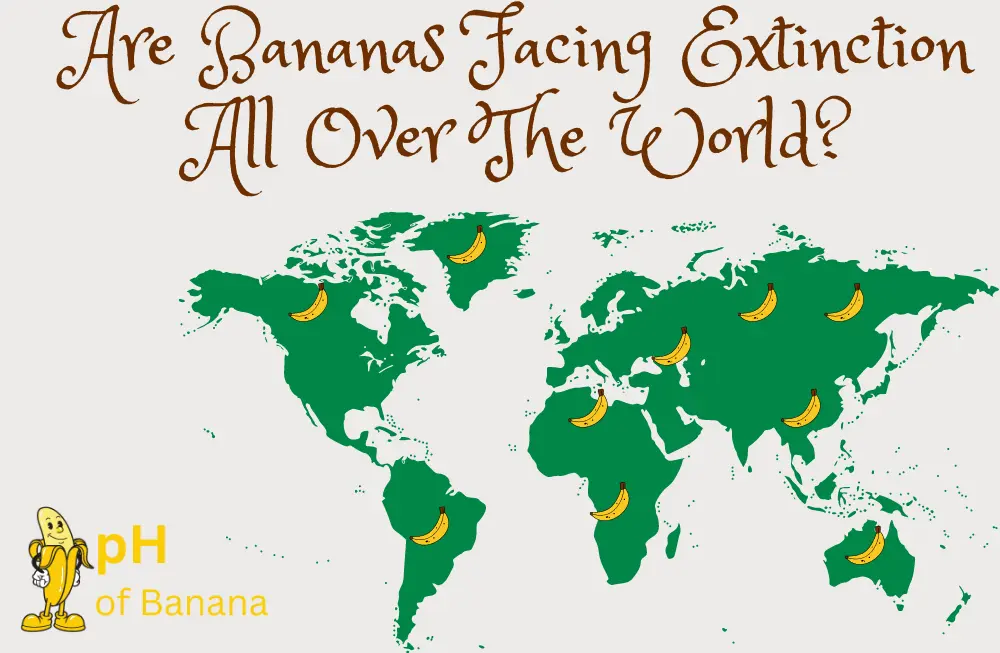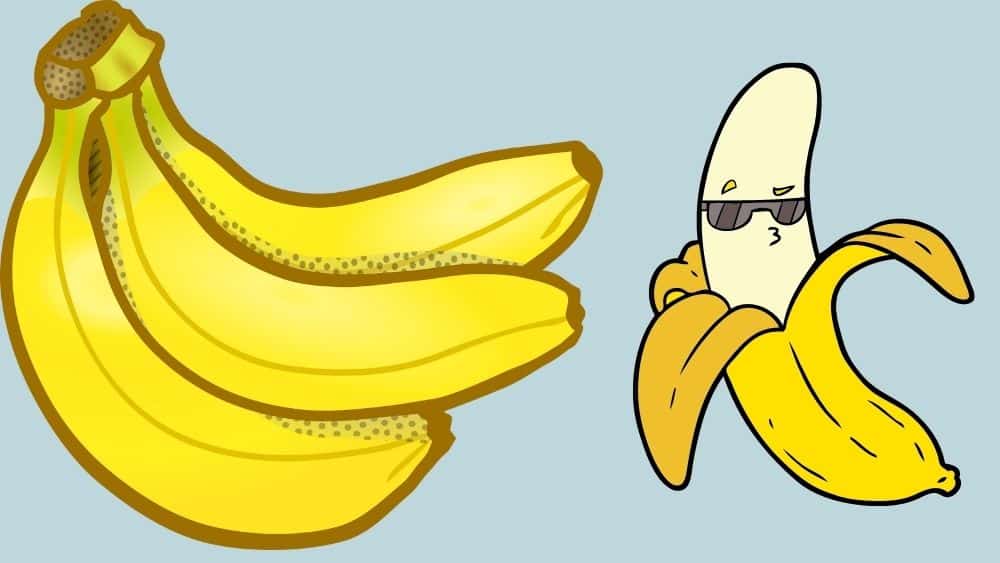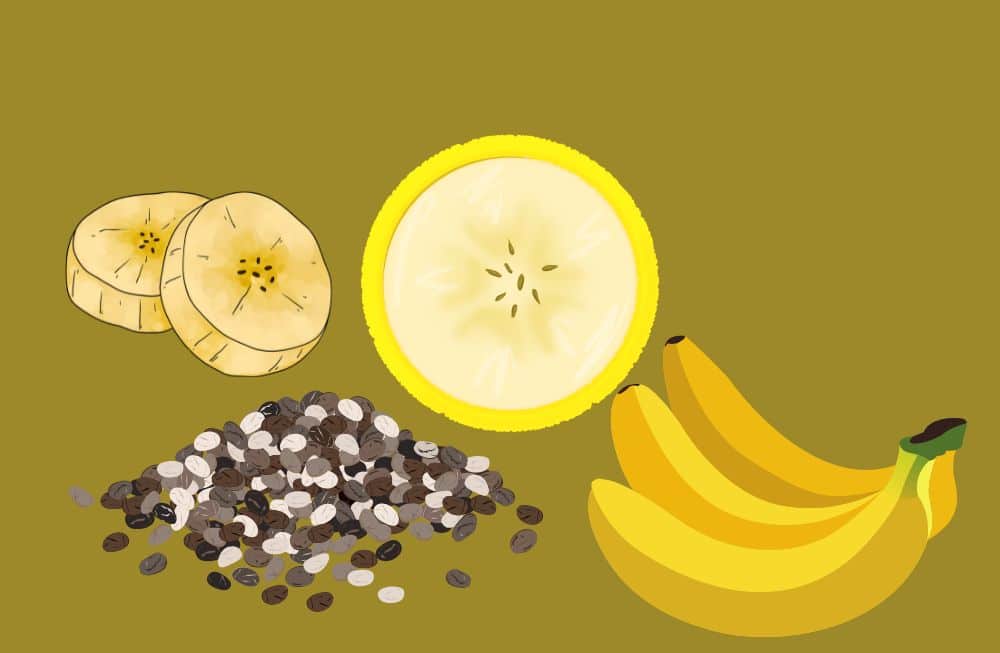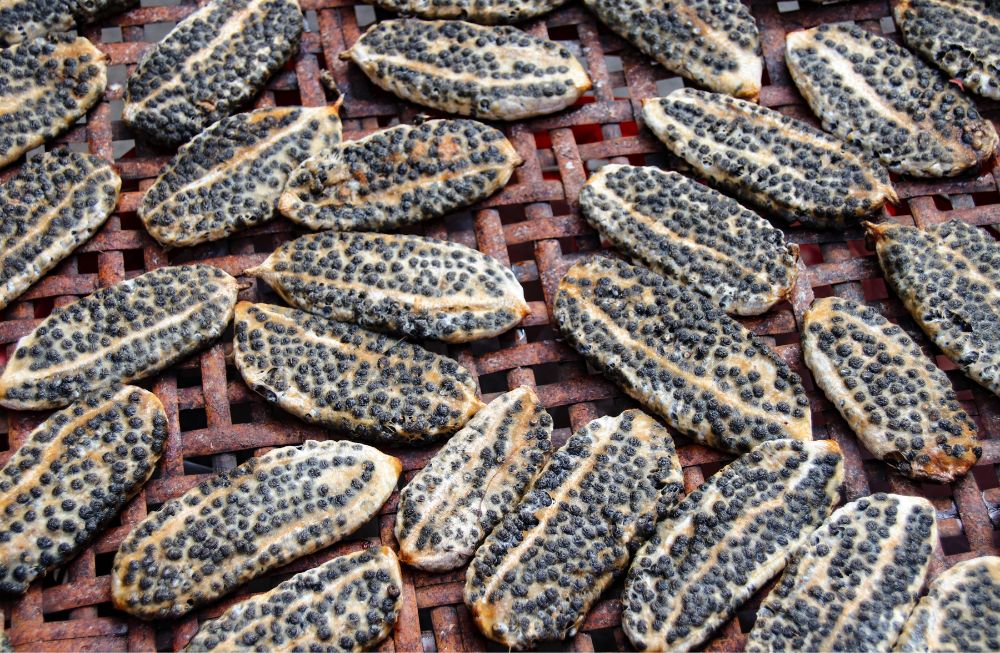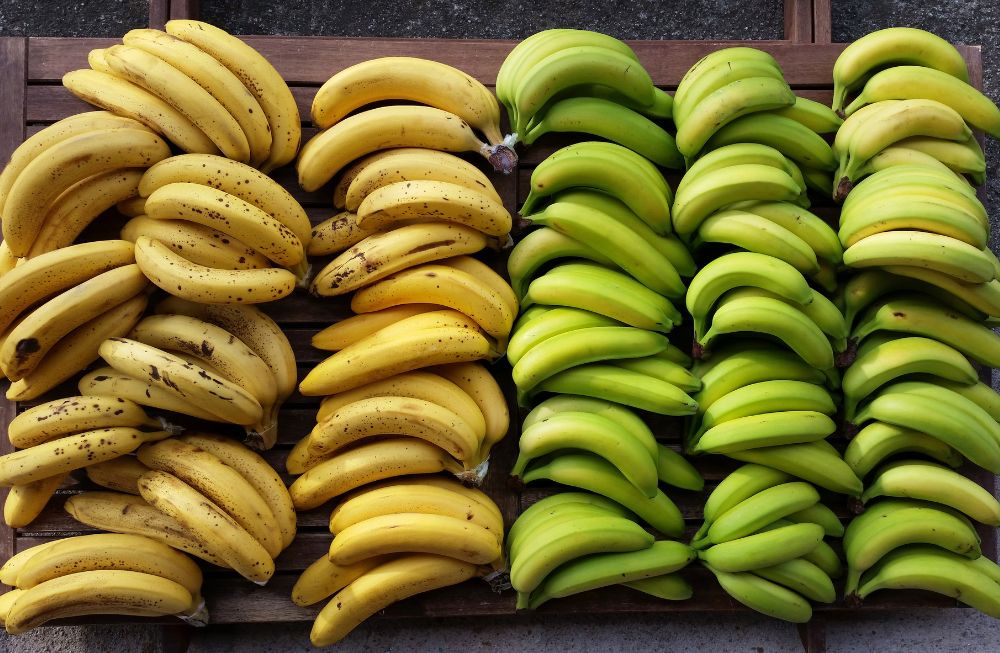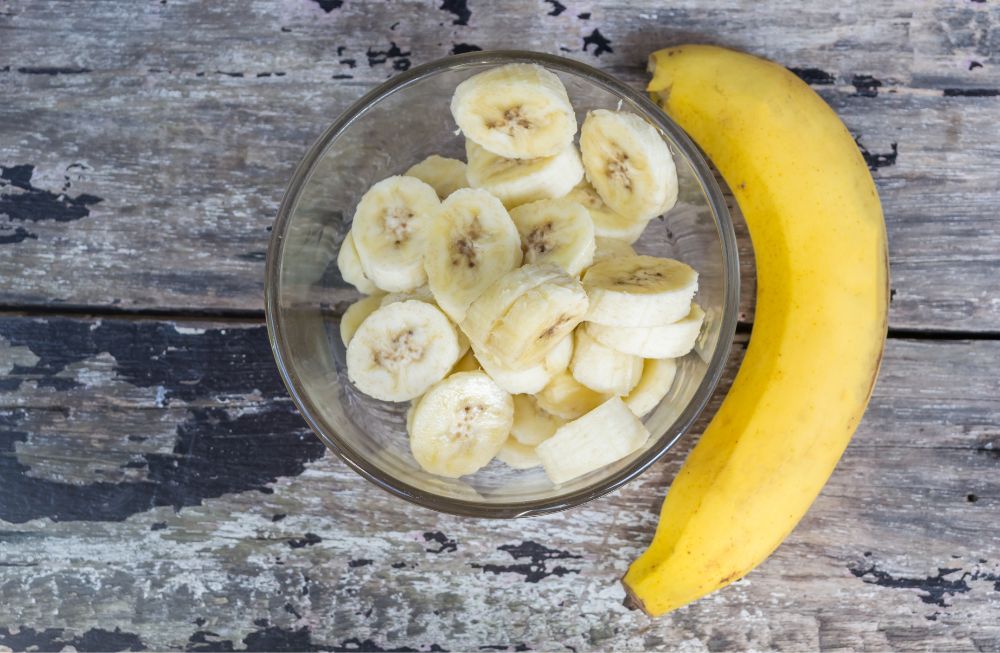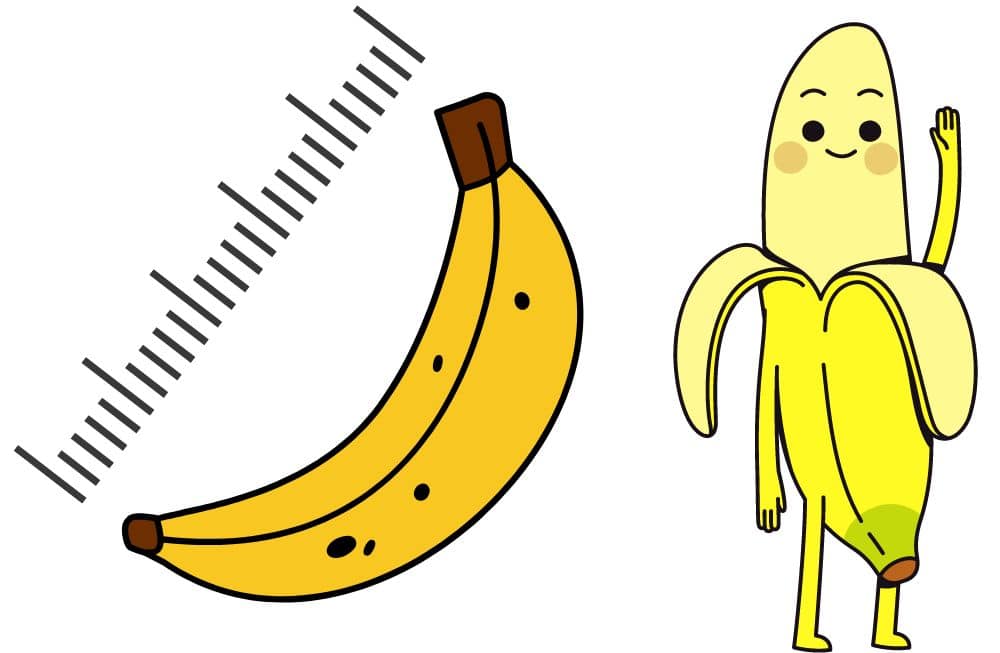Every year around 119 billion tons of bananas are produced all over the world (2019 report FAOSTAT). The export-import business of the banana market is estimated to be worth 50 billion USD. All over the world, banana is one of the most consumed fruits.
The tasteful yellowish fruit provides us with lots of nutrition. You see, the rich in nutrient fruit banana has great value in the economy and environment. However, in the last few years, serious questions have been raised about the extinction of bananas.
Here, in our article, we will learn about are bananas facing extinction, why this problem occurs, how can prevent this situation, and other facts about banana extinction.
Why are bananas facing extinction?
The banana we eat today is called the Cavendish banana. 99% of the world grows Cavendish banana, we export-import the banana and use it for domestic purposes. All shops and groceries sell Cavendish bananas.
Unfortunately, the Cavendish group of banana are in danger, and its existence is now facing serious challenges. So, why is the banana going through a tough period?
The biggest reason Cavendish bananas are under critical condition is the lack of genetic diversity. All the bananas in the world have the same sorts of biological structure. There are no different varieties or uniqueness from one banana to another banana.
In that case, what happens is, if any disease attacks on bananas then it will affect the whole banana race as all the bananas are genetically the same.
Cultivating only the same sorts of breeds call monoculture farming. In that method, a firm grows only one types corp in the field at a time. Why do they do that? Because by monoculture, you can take care of a large portion of corp with the same methods. It saves a huge time and is less expensive.
How is this monoculture putting bananas’ future in danger? Well, the production systems of monoculture are based on cloning rather than seeds. In that case, the crops lose their strength to fight pathogens.
It causes another problem, because of monoculture humans have bred bananas to be farmed and because of that bananas can’t reproduce on their own. The bananas are bred to contain no seeds which means they can’t reproduce and can only grow by planting the offshoots of the parent plant.
Because of monoculture, we get bananas daily basis but the lack of genetic diversity made bananas vulnerable and less resistant to disease.
Banana extinction cases in the past
The Cavendish banana we eat today wasn’t always around all over the globe. Before the 1950s, no one knew about the banana’s Cavendish species. At that time the most popular banana was Gros Michel OP.
Gros Michel was very popular in the whole world for its creamy texture and sweet flavor. It was even popular in such places where Gros Michel could not grow. The banana had played a big role in early international trade too.
Gros Michel had thick skin which prevent the banana from spoiling/bruising for long periods. The banana’s long-time survival quality allowed them to be exported to the whole world. It helped to boost many countries’ economies.
However, the happy days for Gros Michel ended in the 1950s. It ruled the banana market from the 1800s to the 1950s then a banana disease arrive which was called Panama.
The fungus is called Panama because of its major devastation in Panama. The fungus spread out throughout the whole world and affected bananas in Honduras, Suriname, Costa Rica, China, India, the Philippines, and other countries.
Due to the Panama disease, millions of banana plant was devastated, and planting banana on the same field wasn’t possible. That was the time when bananas first faced extinction.
Diseases that can cause banana’s current species extinction
In our previous discussion, we learned how the Panama disease wiped out the whole banana race of Gros Michel. At this time, our favorite banana, Cavendish existence is also facing threats.
The threats are similar to the old time. The main reason for Gros Michel’s extinction was there were no other species but Gros Michel. At present, we only cultivate Cavendish, and it has no genetic diversity.
The current banana species can face extinction again for several diseases. One of the most dangerous banana diseases that can cause a banana pandemic is TR 4.
TR4 affects the banana plant from the bottom of it. It first damaged the vascular system. When the vascular system stops working properly, the plant can’t collect water from the ground.
From the bottom of the plant, TR4 slowly damaged the whole plant. It causes trouble for the plant to grow and prevents the plant from collecting food. TR4 is spreading rapidly, and if we failed to come up with TR4 resistant plant, then bananas potentially undergo extinction.
Besides TR4, another banana disease that is causing trouble for the plant is black leaf streaks. It first affects the leaf and then slowly devastates the plant.
What will banana look like in the future?
From our previous discussion, it’s clear to you how the banana extinction might happen. So to prevent the banana extinction, scientists are working to develop its seeds. Banana researchers from all over the globe are trying to come up with banana seeds that can prevent the attack of Panama and TR4 diseases.
Besides trying to develop the seeds, scientists are also trying to grow bananas on different substances than soil. Specialists are attempting to develop banana plants on coco peat and Rockwool.
Apart from that, banana experts are working in the laboratory to grow lab-grown bananas. This work is still under operation and will take a little time.
So, whatever happens with bananas whether they develop seeds, raise on different substances than soil, or get lab-grown bananas, the future banana shape is surely going to change.
Exactly how the future banana will look is quite hard to tell as scientists haven’t said anything about it. Some banana experts were asked, “How a future banana will look like”, then they draw the future banana shapes from their imagination. Note that none of the pictures were the same. You can look for the video on YouTube.
Scientists were asked, “Are we going to get bananas with different colors in the future?”. They said, “There is very less possibility something like this will happen. The color of the banana will stay the same, but it will be tastier than the Cavendish banana.”
How banana extinction will affect human and animal life
Bananas is our environment’s one of the most popular food. It’s full of many nutritious food values. The fruit is a great source of calories and nutrition.
A medium size banana which is normally 100 grams provides us with 86 calories, 75% water. It supplies us with 1.1 grams of protein and 22.8 grams of carbs. Your body will get 12.2 grams of sugar, 2.6 grams of fiber, and 0.3 grams of fat from a single banana.
So you see, a banana fills up a great portion of the nutrition needs of our body. If it is extinct, the human will suffer from a lack of nutrition. Moreover, so many people’s livelihoods depend on it that they all will lose their job.
The situation will get even worse if bananas become extinct. So many insects and animals make their living and collect food from banana trees. The plant provides shelter and habitats for various animals and insects. If, by any chance, all the banana plants are extinct, then the whole ecosystem will collapse.
Our environment and climate will face serious changes if banana plants become extinct. Nature survives combinedly, the loss of one element, like bananas, will have a very dangerous effect on human and animal life.
Banana Extinction Effect on the different countries’ Economy
Banana doesn’t only provide us with rich nutrition, but it gives us a great way to earn money. Millions of people in the whole world make their living from bananas. Banana has a huge market in both domestic and international trade.
A report shows us that in 2021 13.6 billion dollars worth of international trade took place in banana export and import. So many countries’ economies rely on bananas a lot. Ecuador exported 3.67 billion dollars of bananas in 2021. The Philippines exported 1.49 billion dollars of bananas, and Costa Rica’s banana export was 1.23 billion dollars in 2021. Colombia is in fourth place on that list, exported 1.07 billion dollars, and Guatemala exported 1.01 billion dollars worth of bananas.
So, now you can imagine how big is the banana industry. If anything happens to the banana, then the whole industry will fall apart. Millions of people will lose their livelihoods; a nation will face a great deal of economic damage.
An example will help you to understand how badly the banana extinction can affect a nation’s economy. In 2019, when banana diseases were spreading out heavily, Costa Rica had to announce a national state of emergency.
Saving Bananas from Extinction
The Cavendish and Gros Michel is the most popular and consumed banana in the world. It gained huge popularity because of its lowest shipping cost, longer shelf life, didn’t bruise easily, and they had tough skin.
Even after all this quality, Gros Michel’s banana doesn’t grow anymore, and Cavendish may face the same fate if it can’t resist TR4. There are many other banana species, and some of them are TR4-resistant.
Scientists are examining these bananas to make a TR4-resistant Cavendish banana. The Honduras Foundation for Agricultural Research (FHIA) is working to develop banana varieties that are disease-resistant and almost the same as the Cavendish.
Conclusion
From children to senior citizens, banana is everyone’s favorite fruit. And now you know what happened to your favorite fruits in the past and what will be its future. Are bananas facing extinction or not can’t be told for sure, but it’s under so many threats, no doubt about that.
So, we all have to be careful about our environment to save the banana and other plants. Hope you like the discussion, and if there is anything else you are interested to know then let us know in the comments box. Eat bananas and stay healthy.

